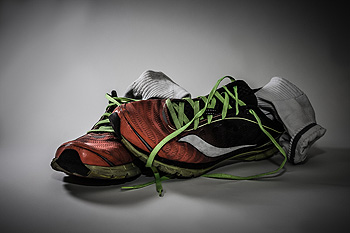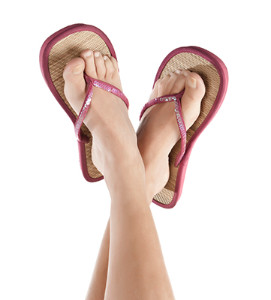Middlefield (860) 349-8500
Wallingford (203) 294-4977
Middlefield (860) 349-8500
Wallingford (203) 294-4977
General foot pain is a common ailment many pregnant women experience. The arches of the foot may disappear as the weight of the body increases, and this can produce a considerable amount of discomfort. The ankles will often become swollen during the latter half of pregnancy, and this may be a result of increased blood pressure. Relief can be found while frequent rests are taken, and it is also beneficial to elevate the feet. Many pregnant women notice ingrown toenails, and this can be due to any changes that may occur in the shape and size of the nail. Research has shown that it is helpful to frequently perform gentle exercises, in addition to drinking plenty of water daily. If you would like additional information on how pregnancy affects the feet, it is recommended that you speak with a podiatrist.
Pregnant women with swollen feet can be treated with a variety of different methods that are readily available. For more information about other cures for swollen feet during pregnancy, consult with Dr. Gordon Fosdick from Affiliated Foot Care Center. Our doctor will attend to all of your foot and ankle needs.
What Foot Problems Can Arise During Pregnancy?
One problem that can occur is overpronation, which occurs when the arch of the foot flattens and tends to roll inward. This can cause pain and discomfort in your heels while you’re walking or even just standing up, trying to support your baby.
Another problem is edema, or swelling in the extremities. This often affects the feet during pregnancy but tends to occur in the later stages.
How Can I Keep My Feet Healthy During Pregnancy?
If you have any questions please feel free to contact our offices located in Middlefield and Wallingford, CT . We offer the newest diagnostic and treatment technologies for all your foot and ankle needs.
 If you have noticed excessive sweat coming from your feet, you may have a medical condition that is known as plantar hyperhidrosis. It can occur as a result of an overactive nervous system, obesity, or a thyroid disorder. There are disadvantages to having this condition, including slipping in open shoes that may cause the ankle to twist, or the foot slipping off the brake while attempting to stop the car. There are treatment options that do not require surgery which may help to obtain mild relief. These can include taking anti-anxiety drugs, botox injections, or taking specific medications that can induce drying. For severe cases, surgery may be a viable option which can include cutting the affected nerve. If you are suffering from this uncomfortable condition, it is strongly advised that you speak to a podiatrist who can offer the best treatment for you.
If you have noticed excessive sweat coming from your feet, you may have a medical condition that is known as plantar hyperhidrosis. It can occur as a result of an overactive nervous system, obesity, or a thyroid disorder. There are disadvantages to having this condition, including slipping in open shoes that may cause the ankle to twist, or the foot slipping off the brake while attempting to stop the car. There are treatment options that do not require surgery which may help to obtain mild relief. These can include taking anti-anxiety drugs, botox injections, or taking specific medications that can induce drying. For severe cases, surgery may be a viable option which can include cutting the affected nerve. If you are suffering from this uncomfortable condition, it is strongly advised that you speak to a podiatrist who can offer the best treatment for you.
If you are suffering from hyperhidrosis contact Dr. Gordon Fosdick of Affiliated Foot Care Center. Our doctor can provide the care you need to attend to all of your foot and ankle needs.
Hyperhidrosis of the Feet
Hyperhidrosis is a rare disorder that can cause people to have excessive sweating of their feet. This can usually occur all on its own without rigorous activity involved. People who suffer from hyperhidrosis may also experience sweaty palms.
Although it is said that sweating is a healthy process meant to cool down the body temperature and to maintain a proper internal temperature, hyperhidrosis may prove to be a huge hindrance on a person’s everyday life.
Plantar hyperhidrosis is considered to be the main form of hyperhidrosis. Secondary hyperhidrosis can refer to sweating that occurs in areas other than the feet or hands and armpits. Often this may be a sign of it being related to another medical condition such as menopause, hyperthyroidism and even Parkinson’s disease.
In order to alleviate this condition, it is important to see your doctor so that they may prescribe the necessary medications so that you can begin to live a normal life again. If this is left untreated, it is said that it will persist throughout an individual’s life.
A last resort approach would be surgery, but it is best to speak with your doctor to find out what may be the best treatment for you.
If you have any questions please feel free to contact our offices located in Middlefield and Wallingford, CT . We offer the newest diagnostic and treatment technologies for all your foot and ankle needs.
 If there are weakened muscles in your toes, a medical condition that is referred to as hammertoe may develop. This can cause the tendons in the toes to become shorter, and they may bend downward, resembling a hammer. The toes that are typically affected are the second and third toes, but it may occur on any toe. It can be caused by genetic factors, or may happen from wearing shoes that do not have adequate room for the toes to move freely in. Patients who have hammertoe can experience difficulty in walking and flexing the feet, and corns and calluses may develop on top of the toes. When shoes that are worn fit properly, this condition could be prevented. Additionally, some patients find mild relief when shoe inserts or toe pads are worn. If you are afflicted with hammertoe, it is strongly suggested that you seek the counsel of a podiatrist who can properly treat this uncomfortable condition.
If there are weakened muscles in your toes, a medical condition that is referred to as hammertoe may develop. This can cause the tendons in the toes to become shorter, and they may bend downward, resembling a hammer. The toes that are typically affected are the second and third toes, but it may occur on any toe. It can be caused by genetic factors, or may happen from wearing shoes that do not have adequate room for the toes to move freely in. Patients who have hammertoe can experience difficulty in walking and flexing the feet, and corns and calluses may develop on top of the toes. When shoes that are worn fit properly, this condition could be prevented. Additionally, some patients find mild relief when shoe inserts or toe pads are worn. If you are afflicted with hammertoe, it is strongly suggested that you seek the counsel of a podiatrist who can properly treat this uncomfortable condition.
Hammertoe
Hammertoes can be a painful condition to live with. For more information, contact Dr. Gordon Fosdick from Affiliated Foot Care Center. Our doctor will answer any of your foot- and ankle-related questions.
Hammertoe is a foot deformity that affects the joints of the second, third, fourth, or fifth toes of your feet. It is a painful foot condition in which these toes curl and arch up, which can often lead to pain when wearing footwear.
Symptoms
Causes
Genetics – People who are genetically predisposed to hammertoe are often more susceptible
Arthritis – Because arthritis affects the joints in your toes, further deformities stemming from arthritis can occur
Trauma – Direct trauma to the toes could potentially lead to hammertoe
Ill-fitting shoes – Undue pressure on the front of the toes from ill-fitting shoes can potentially lead to the development of hammertoe
Treatment
Orthotics – Custom made inserts can be used to help relieve pressure placed on the toes and therefore relieve some of the pain associated with it
Medications – Oral medications such as anti-inflammatories or NSAIDs could be used to treat the pain and inflammation hammertoes causes. Injections of corticosteroids are also sometimes used
Surgery – In more severe cases where the hammertoes have become more rigid, foot surgery is a potential option
If you have any questions please contact our offices located in Middlefield and Wallingford, CT . We offer the newest diagnostic and treatment technologies for all your foot and ankle needs.
 As the warm weather begins and the cold weather fades, many people begin their “spring cleaning.” Boots are stowed away and flip-flops become the trend. It may seem like a good idea to wear sandals, but there are risks associated with wearing flip-flops every day. Since there are typically no arches in flip flops, the feet may turn inward and the toes generally have to grip harder to ensure the shoe stays on the foot. Research has indicated that ankle sprains are the most common type of injury while wearing these types of shoes. This may be a result of a lack of support that can come from wearing shoes with an open back. If you would like additional information about how wearing flip-flops can affect your feet, please consult with a podiatrist.
As the warm weather begins and the cold weather fades, many people begin their “spring cleaning.” Boots are stowed away and flip-flops become the trend. It may seem like a good idea to wear sandals, but there are risks associated with wearing flip-flops every day. Since there are typically no arches in flip flops, the feet may turn inward and the toes generally have to grip harder to ensure the shoe stays on the foot. Research has indicated that ankle sprains are the most common type of injury while wearing these types of shoes. This may be a result of a lack of support that can come from wearing shoes with an open back. If you would like additional information about how wearing flip-flops can affect your feet, please consult with a podiatrist.
Flip-flops can cause a lot of problems for your feet. If you have any concerns about your feet or ankles, contact Dr. Gordon Fosdick from Affiliated Foot Care Center. Our doctor will assist you with all of your foot and ankle needs.
Flip-Flops and Feet
Flip-flops have managed to become a summer essential for a lot of people. While the shoes may be stylish and easy to slip on and off, they can be dangerous to those who wear them too often. These shoes might protect you from fungal infections such as athlete’s foot, but they can also give you foot pain and sprained ankles if you trip while wearing them.
When Are They Okay to Wear?
Flip-flops should only be worn for very short periods of time. They can help protect your feet in places that are crawling with fungi, such as gym locker rooms. Athlete’s foot and plantar warts are two common fungi that flip-flops may help protect your feet against.
Why Are They Bad for My Feet?
These shoes do not offer any arch support, so they are not ideal for everyday use. They also do not provide shock absorption or heel cushioning which can be problematic for your feet. Additionally, you may suffer from glass cuts, puncture wounds, and stubbed toes since they offer little protection for your feet.
More Reasons Why They Are Bad for Your Feet
If you have any questions, please feel free to contact our offices located in Middlefield and Wallingford, CT . We offer the newest diagnostic and treatment technologies for all your foot care needs.